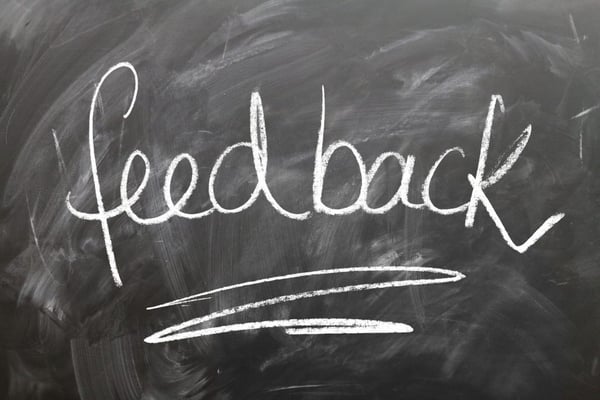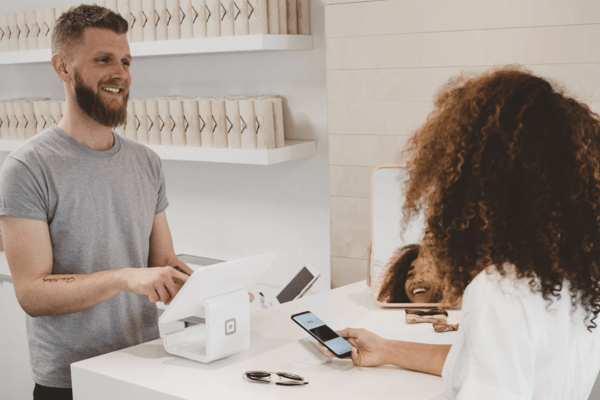The lean startup methodology and when it can be beneficial to take this approach.
The lean startup methodology is a method of managing and building a business or startup by experimenting, testing, and iterating while developing products based on findings from your tests and feedback.
This method of business management and product development is designed to deliver products to customers at a quicker pace (often tested in the form of an MVPby focusing on product features that have been validated through explicit customer feedback at various stages in the product development cycle.
Entrepreneur Eric Ries first introduced this methodology in a book that he authored in 2008, which is titled "How Today's Entrepreneurs Use Continuous Innovation to Create Radically Successful Business".
If you are currently thinking about creating a business and are searching for methods of doing so, it's recommended that you understand the difference between the lean startup methodology and the traditional methodology. Knowing what the lean methodology entails should help you determine if the method is right for you and your business.
This article takes a closer and more in-depth look at the lean startup methodology and when it can be beneficial to take this approach.
The lean startup methodology is used to develop products and businesses in a short period of time, which allows the creator of the product or business to quickly determine if their business model is a viable one. When implementing the lean startup methodology, the business that uses this methodology will focus on developing a product while also gaining customer feedback, which usually involves releasing a minimum viable product to the market or a small subset of your customers.
The goal of using this methodology is to get rid of wasteful practices during the initial stages of a company, which provides the company with a higher possibility of long-term success. By using the lean startup methodology, it's possible for early-stage startups to garner success without requiring high amounts of funding, comprehensive business plans, or a product that has no flaws.
For the lean startup process to be successful, the startup that uses it will need to focus on obtaining customer feedback on the initial product. This feedback will help you make changes and iterations on the product that will allow it to be improved over time in accordance with the wishes of the customers. The customer feedback that you receive should also keep you from spending resources on services and features that your customers don't want. The lean startup methodology is aimed at using the lowest amount of resources possible.

This idea was first brought about by entrepreneur Eric Ries in a novel that he put out in 2008. This book centered around using innovation to create successful businesses. He created this methodology in order to minimize the inherent risks that come with creating a startup. As stated in the novel, these risks can be minimized by creating minimum viable products, consistently learning throughout the development process, and experimenting constantly. Eric Ries created this idea from knowledge he gained after two previous business failures as well as the streamlined process of making vehicles that occurred in Japan during the years immediately following WWII. Ries believes that efficiency is the only way for a startup to be successful without wasting necessary resources.
The methodology of the lean startup technique centers around build, measure, and learn, which Ries wrote about in his novel.

This methodology begins with the creation of a minimum viable product, which refers to a service or product that has enough features to keep customers satisfied while you test your theory that the product can be successful on the market. Keep in mind that an MVP shouldn't be provided to all of your customers. Instead, you should select a small subset of customers across a range of demographics who can use your product.
This is the build component of the lean startup methodology. Since building is the first aspect of this methodology, it's highly recommended that you begin creating a basic product or service in the early days of your startup.

When looking at the measure component of this methodology, it's essential that you effectively measure the results of your minimum viable product while you continue to develop the product. The feedback that's provided to you by these customers can be used to fine-tune the product and make it more feature-rich. If you find that the very idea of your MVP isn't gaining traction with the customers that the MVP was provided to, you should be able to get rid of the basic product without having used too much of your resources.
The feedback that you receive can be measured in a variety of ways. If you are creating a business that exists solely online, you would gain feedback by providing customers with surveys and by looking at the analytics for your website to determine what you're doing well and what could be improved.
For an actual product that's being tested before it's placed on the market, the feedback can be easier to obtain by asking testers questions about the product that they're using. Once you've obtained data on your minimum viable product, you can start learning from this data, which is the third component of the lean startup methodology.

It's not enough to measure the results from the product that you've received and to obtain feedback from the initial customers. If you want to eventually create a product or service that's ready to be placed on the market, it's important that you learn from the data and feedback that you've received, which isn't always an easy thing to do.
For instance, some of the feedback that you receive might not lead to the creation of a successful product. However, this feedback is best used to identify which aspects of the product aren't working and which ones may need to be refined. If you can effectively learn from the results of the product testing, you should be able to develop a product that meets the needs of your target audience.

The ideas that are used in the learn startup methodology go against the standards that have long been used in the traditional startup approach. The traditional startup approach requires startups to create a 2-5 year business plan that lays out all of their goals and ideas for how they will reach success. When using the traditional approach, you will then use the created plan to raise funds that can help you accomplished your business goals.
Another key difference between the traditional approach and the lean approach is that the traditional principles center around developing products quietly to the point where the product is unknown to anyone but the employees who work on it and the investors of the company. While this approach works for companies that have already attained a large amount of success, it can be less useful for early-stage startups.
Entrepreneurs who use the lean methodology will typically begin by looking for the right business model and eventually testing the idea that they have. The feedback that you receive from customers is then used to iterate on the product and improve it.
There aren't many similarities between the lean methodology and the traditional methodology. While both of these approaches can be successful, they have distinctly different core principles.

If you want your startup to use the lean methodology, this means that you need to center your business around the customer. If you have an idea for a product or service, you won't start by creating a business plan for your company. Instead, you should begin to creating a minimum viable product. Keep in mind that customers will see the development process first-hand, which isn't always a comforting sight. However, this can help you improve customer loyalty. The minimum viable product that you create should only have the most basic features that will allow customers to actively interact with the product.
Once you have created an MVP, the next step of the process involves providing it to a small subset of your target audience. If these individuals don't like a product that you put out, it will be very difficult for you to obtain a lasting customer base. As customers use your MVP, you should focus on obtaining their feedback, which can then be used to make changes to the product and eventually make it more feature-complete.
When you become a lean startup, you should expect to experiment on a regular basis. While the results may not always be favored by your customers, scaling back changes should be easy with the iterative approach that you're taking to product development. Over time, you should be able to create a product that's ready to be released on the market. This is a very fast method of product development that should help you save money. However, it can be hectic as you react to the feedback that you receive from test customers.
It's important to know about the lean startup methodology because it can be the basis for your entire company. Whether you choose the traditional startup approach or the lean approach, understanding the differences between these two methods should make it easier for you to determine which approach would best fit your new startup. At University Lab Partners, we can help provide you with the space and resources that you require to use the lean startup methodology.
Whether you're in the midst of creating a minimum viable product or are currently examining the feedback that you've received, the ULP wet-lab incubator offers shared office space and lab space that can help you keep expenses down. By renting equipment and space instead of buying them, you should be able to put your resources into research or product development, which can be far more beneficial for business growth.
Contact ULP today to find out more about the services we provide and how these services can be of use to you.
Revised 11/18/2020
Download The Ultimate Guide to Wet Lab Incubators in Southern California, a handbook to assist life science start-ups through the entire decision-making process to find wet lab space.
Download Now